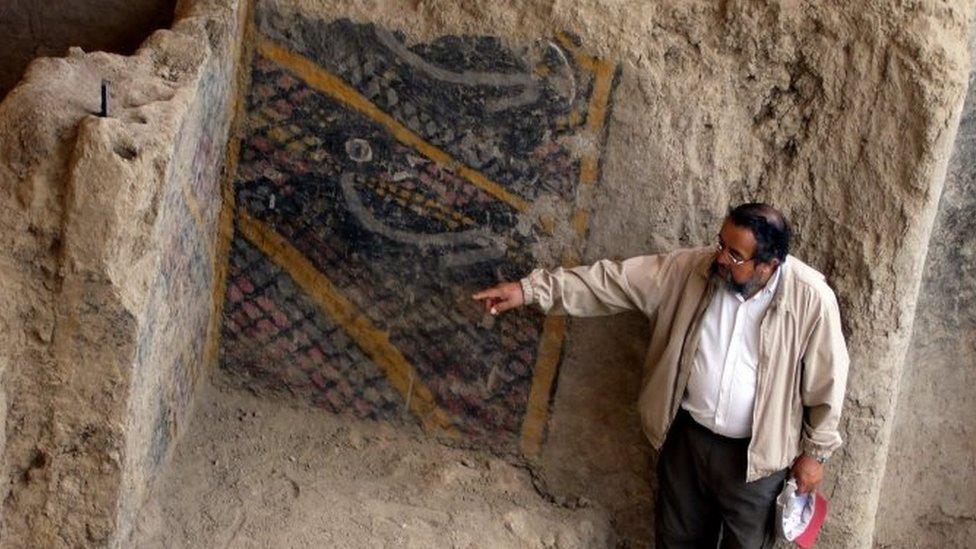Ancient Peruvian mural at Ventarrón destroyed in fire
- Published

The photo shows the mural before the fire spread through the archaeological complex
A fire at the Ventarrón archaeological complex in northern Peru has destroyed a mural dating back to 2000BC, officials say.
The fire at the 4,500-year-old archaeological site is believed to have been caused by farm workers burning sugar cane nearby.
The mural, one of the oldest documented in the Americas, has suffered smoke damage.
The painting shows a deer caught in a net and was discovered in 2007.
It adorns the wall of a temple in the Lambayeque region of Peru.
Peruvian media reported that 95% of the archaeological complex had been damaged in the fire which, fanned by strong winds, spread rapidly across the site.
Agencia Andina news agency tweeted a video of the fire taken by archaeologist Ignacio Alva Meneses showing the extent of the blaze.
Allow X content?
This article contains content provided by X. We ask for your permission before anything is loaded, as they may be using cookies and other technologies. You may want to read X’s cookie policy, external and privacy policy, external before accepting. To view this content choose ‘accept and continue’.
Local residents tried to extinguish the flames but could not save the archaeological artefacts, some of which were damaged when plastic tarpaulin covering the site melted.
"We are losing an exceptional monument unique to its generation," archaeologist Walter Alva said.
Archaeologists think that the temple complex was built by a culture that predated other pre-Columbian cultures such as the Moche, who lived in the northern coastlands of Peru from the first to the seventh century.
"I can only express my outrage and sadness for this irreparable loss." Mr Alva, one of the archaeologists who excavated the site, said.
Carbon dating suggested the murals were painted in 2000BC.
Peru's culture ministry said it had requested that investigators be sent to the region to examine who was responsible for the fire.
- Published5 July 2017

- Published31 January 2017

- Published23 August 2015
